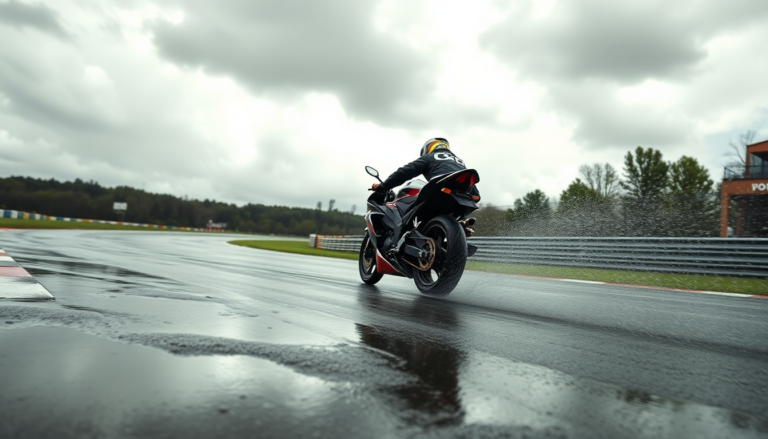Argomenti trattati
In the thrilling world of competitive racing, the ability to adapt is crucial, especially when the weather throws a curveball. Just take a look at the recent wet-to-dry Talent Cup Q2 session at Mid-Ohio, where Sam Drane made a bold move by heading out onto the track alone. While most racers chose to stay in the pits, hesitant to tackle the tricky conditions, Drane saw a golden opportunity to log essential laps. His decision was a perfect mix of courage and strategic thinking—qualities that every racer should aspire to have.
Understanding the Qualifying Sessions
In the Talent Cup, a racer’s performance isn’t just about raw speed; it’s also about how well they can adapt to rapidly changing conditions. The starting grid for each race is determined by the Q1 times set during the previous day’s qualifying session. This setup emphasizes the importance of timing and strategic choices, which can make or break a racer’s chances at success.
Leading the pack was Bodie Paige from CTR/D&D Cycles, who clinched the pole position on Saturday with a remarkable lap time of 1:36.084. His achievement not only highlights his driving skills but also underscores the significance of preparation and performance under pressure. Hot on his heels was Alessandro Di Mario from Warhorse Ducati/American Racing, clocking in at 1:36.685, followed closely by Hank Vossberg from Tytler Cycles Racing with a time of 1:37.046. Each of these racers brought their A-game, proving that in racing, speed and reliable handling are vital, especially when conditions are less than ideal.
The Event Context and Structure
The Talent Cup took place alongside the AMA Vintage Motorcycle Days, a combination that added an extra layer of excitement and competition. This dual event not only draws a diverse crowd but also raises the stakes for all participants. Thanks to the efficient management by WERA Motorcycle Roadracing, the atmosphere remained structured and professional—a must for high-pressure competitions.
Additionally, the officiating and timing of the Talent Cup were expertly handled by the seasoned MotoAmerica crew, lending credibility and precision to the event. This level of organization allows racers to focus solely on their performance without the headache of administrative hiccups that can often complicate races.
Implications for Future Events
Looking ahead, the lessons learned from the performances at Mid-Ohio resonate beyond just the immediate results. The adaptability showcased by racers like Sam Drane signals a growing trend: viewing challenging conditions as opportunities for growth. This mindset is essential not just for individual racers but also for teams aiming to sharpen their strategies for upcoming competitions.
In conclusion, the unique wet-to-dry conditions of the Talent Cup at Mid-Ohio provided a fascinating perspective on the skills and strategies employed by the participating racers. As the competition progresses, a deep understanding of these dynamics will be crucial for anyone eager to gain an edge in the fiercely competitive realm of motorcycle racing.

